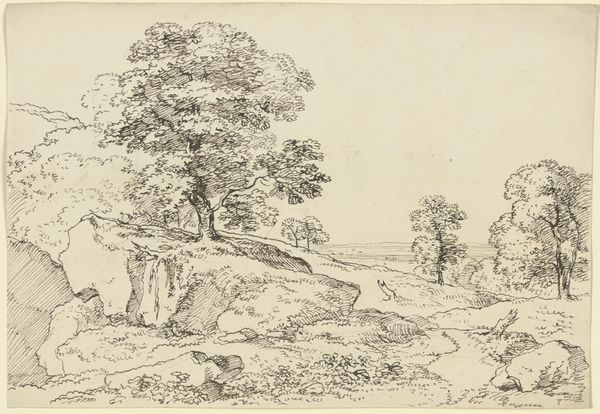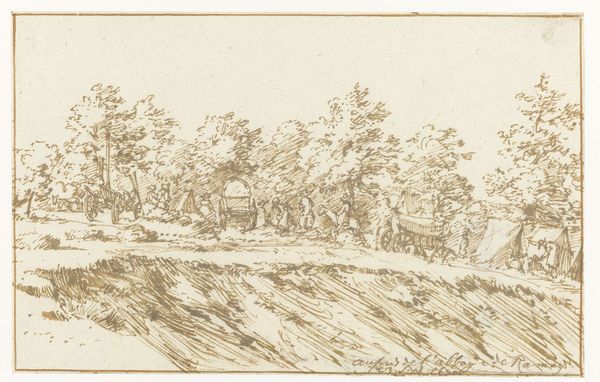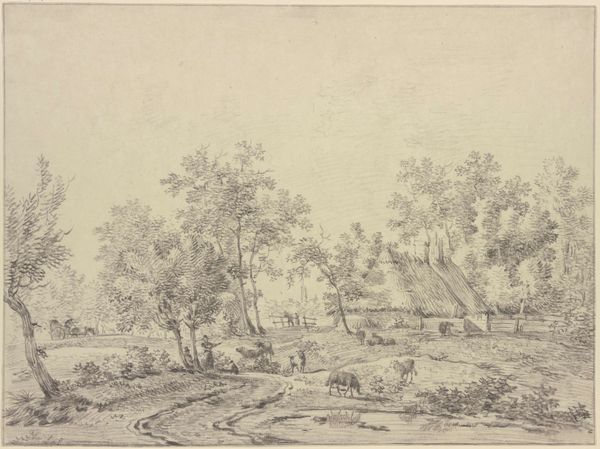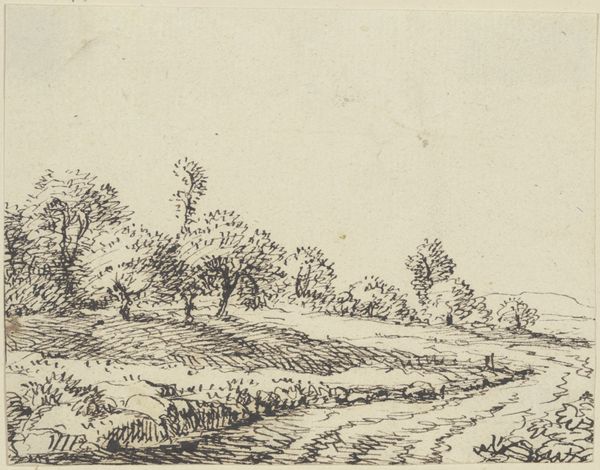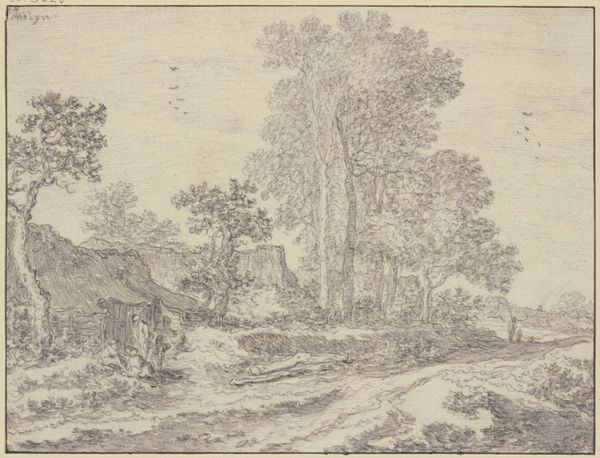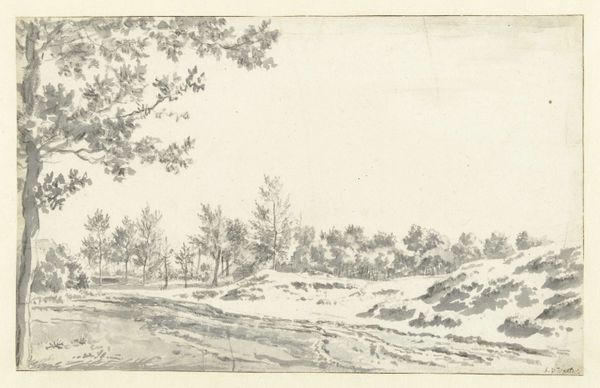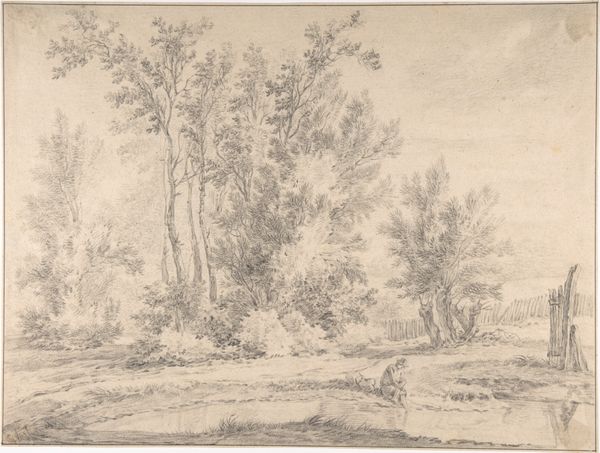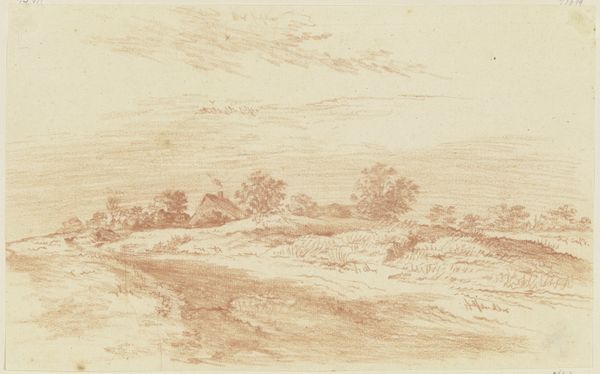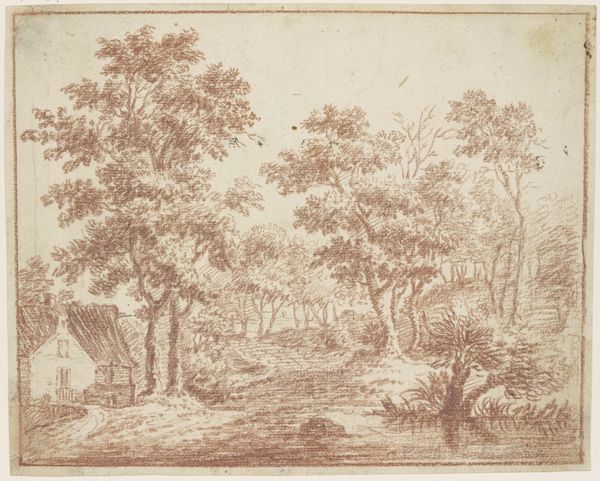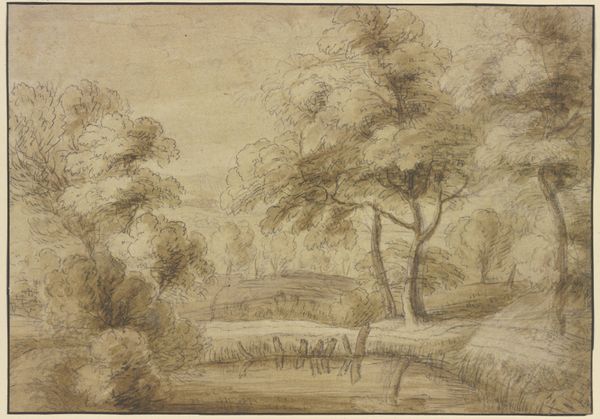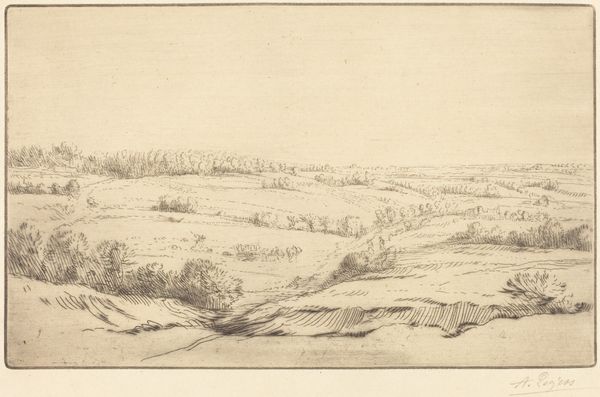
Landscape with the Village of Lincent 1675
0:00
0:00
drawing, print, etching, paper, ink
#
drawing
#
baroque
#
dutch-golden-age
# print
#
etching
#
landscape
#
etching
#
paper
#
ink
Dimensions: 4 x 6 15/16 in. (10.2 x 17.7 cm)
Copyright: Public Domain
Curator: Here we have "Landscape with the Village of Lincent," created in 1675 by Constantijn Huygens the Younger. It’s a lovely etching, rendered in ink on paper. Editor: My immediate impression is of quiet spaciousness. The foreground almost reads as a stage, setting the scene for the village nestled on the horizon. It feels intimate yet expansive. Curator: Indeed. Huygens's skill lies in his handling of light and shadow through such economical lines. Notice how the delicate cross-hatching creates a sense of depth, drawing the eye toward the vanishing point. We must remember that 17th-century Dutch landscape art was closely connected to the Dutch identity—to notions of home, ownership, and prosperity. Editor: Right. Landscapes emerged as independent genres during this period, mirroring a growing sense of national pride and connection to the land itself, after their newly gained independence from Spain. Consider how such relatively small prints found their way into homes, reinforcing the value of regional awareness. The etching technique itself, readily multiplied and distributed, played a key role in propagating this image of Dutch stability and virtue. Curator: And observe the details—or rather, the suggestion of details! Huygens offers just enough visual information for the viewer to fill in the rest, to reconstruct a complete world from sparse cues. The composition's asymmetry contributes significantly. Editor: I agree, the strategic placement of the foliage breaks any sense of sterile geometry. In doing so, it avoids idealization, presenting viewers instead with a pastoral image of understated beauty, or a certain vision for such values. These images really contributed to construct shared socio-political beliefs. Curator: It truly showcases the beauty achievable through restraint. The line becomes a powerful tool in his hands, shaping form and atmosphere with extraordinary elegance. I think I better appreciate this now. Editor: Me too. Examining the print with this much formal analysis gives the composition a clarity that reflects on broader cultural implications, something so often seen in baroque Dutch artworks.
Comments
No comments
Be the first to comment and join the conversation on the ultimate creative platform.
